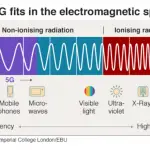Last Updated on 12 months by Francis
Amethyst, a member of the quartz family, is a popular gemstone known for its purple hue. While it may be well known and beloved among jewelry enthusiasts, the question remains: is amethyst actually valuable? In this discussion, we will explore the factors that contribute to amethyst’s worth and determine whether it is truly a valuable stone.
Contents
The History of Amethyst
Amethyst has been a highly prized gemstone for thousands of years. It was once considered to be as valuable as diamonds and rubies. The ancient Greeks believed that amethyst had magical powers that could protect the wearer from harm. They also believed that the stone could help prevent drunkenness, and it was often used to make wine goblets. In medieval times, amethyst was believed to have healing powers and was used to treat a variety of ailments, including headaches and insomnia. Today, amethyst is still highly valued for its beauty and its purported healing properties.
The Properties of Amethyst
Amethyst is a type of quartz that is typically purple in color. The color can range from pale lilac to deep violet. The intensity of the color is determined by the amount of iron and other trace elements that are present in the stone. Amethyst is a hard and durable gemstone, making it ideal for use in jewelry. It has a Mohs hardness of 7, which means it is relatively scratch-resistant. Amethyst is also resistant to heat and chemicals, making it an excellent choice for use in jewelry.
The Healing Properties of Amethyst
Amethyst is believed to have a variety of healing properties. It is said to help relieve stress and anxiety, promote relaxation, and improve sleep. It is also believed to help boost the immune system and promote overall physical and emotional well-being. Some people also believe that amethyst can help improve intuition and spiritual awareness, making it a popular choice for use in meditation and spiritual practices.
The Value of Amethyst
The value of amethyst varies depending on a variety of factors, including the size, color, and quality of the stone. Larger stones with a deep, rich color are generally more valuable than smaller, lighter-colored stones. The clarity of the stone is also important, with clearer stones being more valuable than those with inclusions or other imperfections. Cut and shape also play a role in determining the value of amethyst. Faceted stones are generally more valuable than cabochons or beads.
The Uses of Amethyst
Amethyst is a versatile gemstone that can be used in a variety of ways. It is commonly used in jewelry, including rings, necklaces, bracelets, and earrings. It is also used in decorative objects, such as vases, bowls, and figurines. Some people even use amethyst in their homes to promote a sense of calm and relaxation. It can be placed in a room or worn as jewelry to help promote feelings of peace and tranquility.
How to Care for Amethyst
Amethyst is a relatively hard and durable gemstone, but it still requires some care to keep it looking its best. Here are some tips for caring for your amethyst jewelry:
- Store your amethyst jewelry separately from other jewelry to avoid scratches and damage.
- Avoid exposing your amethyst jewelry to high heat or chemicals, as this can cause damage to the stone.
- Clean your amethyst jewelry regularly with a soft cloth and mild soap and water. Avoid using harsh chemicals or abrasive materials.
- Have your amethyst jewelry professionally cleaned and inspected periodically to ensure that it is in good condition.
FAQs for “Is Amethyst Valuable?”
What is amethyst?
Amethyst is a purple-colored gemstone that is a type of quartz. It is known for its color and is often used in jewelry making. Amethyst can range in size and quality, with the highest quality stones having a deep, rich purple color and minimal inclusions.
Is amethyst valuable?
The value of amethyst varies depending on a variety of factors, including color, clarity, size, and origin. High-quality amethyst can be quite valuable and is often used in premium jewelry pieces. However, lower quality amethyst that is lighter in color or has many inclusions may not have as much value.
What are the factors that affect the value of amethyst?
The factors that can affect the value of amethyst include color, clarity, carat weight, cut, and origin. The most valuable amethysts are those that have a deep, rich purple color, with minimal visible inclusions. Amethysts that are large in size and of high clarity are also more valuable, as well as those that are well-cut to enhance their natural beauty.
Can amethyst be used for investment purposes?
While it is possible to invest in gemstones like amethyst, it is not a widely popular investment option compared to other commodities like gold or stocks. Amethyst values can fluctuate over time, and it may be difficult to find a buyer at a fair price when it comes time to sell. Therefore, it is important to research and fully understand the market and risks before investing in amethyst or any other gemstone.
How can I tell if my amethyst is valuable?
The value of an amethyst can be assessed by a professional gemologist or appraiser. They will consider factors like color, clarity, size, cut, and origin to determine its worth. However, there are some general guidelines that can help determine if an amethyst is of higher value. The most valuable amethysts have a deep, rich purple color without any visible inclusions. It should also have good clarity and be well-cut to enhance its natural beauty. Larger carat weights and amethysts from notable or rare locations may also increase its value.

.jpg)
.jpg)
.jpg)
.jpg)


